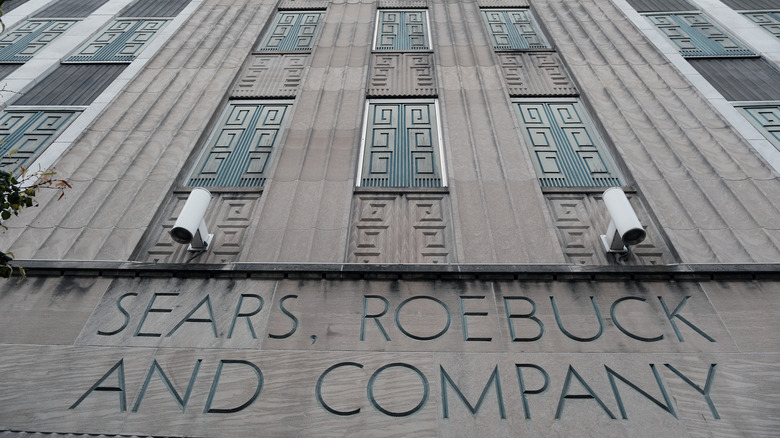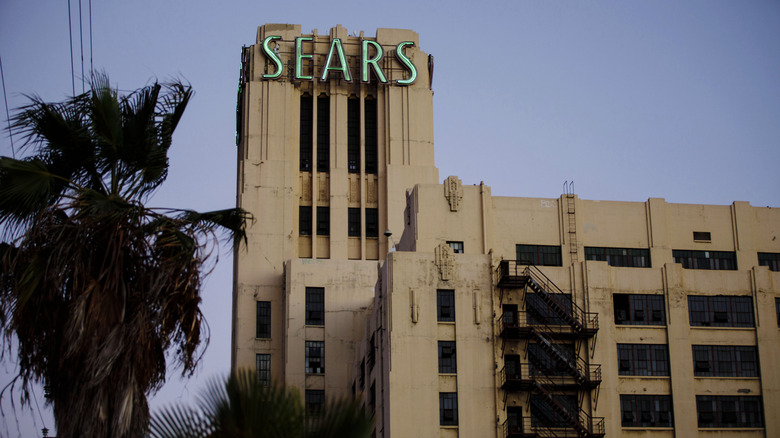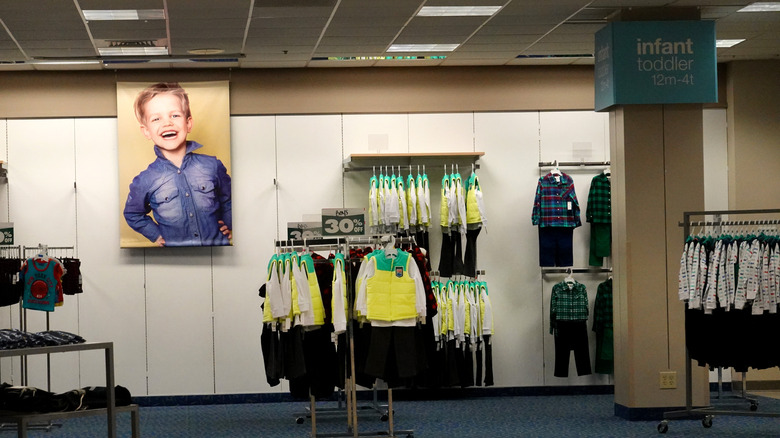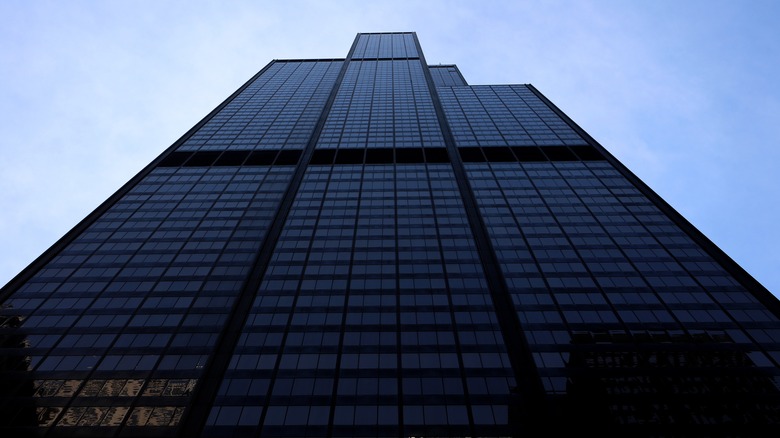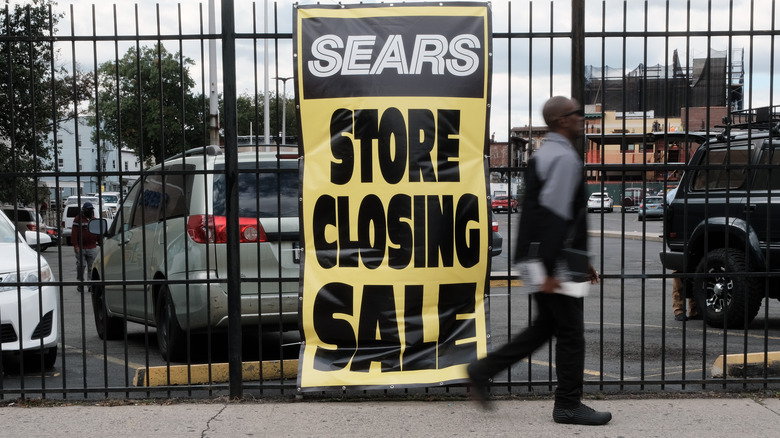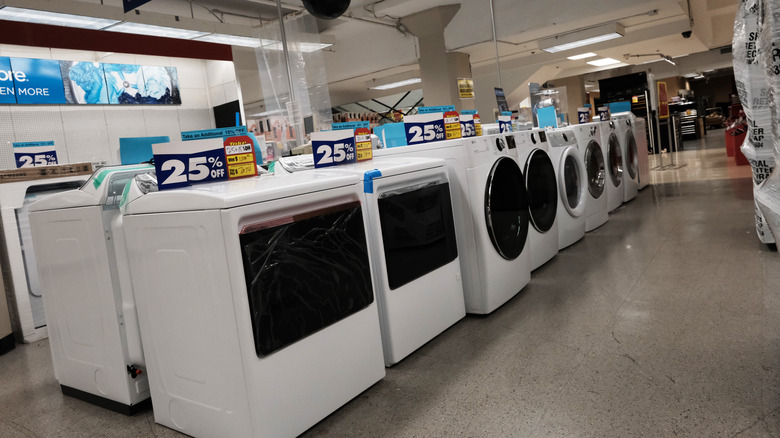What Happened To Sears Stores?
Sears grew to be one of the biggest retailers in the world — but then it all came crashing down. The history of Sears department stores spans almost 130 years, growing from a small store to hundreds of locations around the world.
It all began in 1886, when Richard W. Sears was working as a railroad station agent (via History). One day, he noticed a local jeweler had refused to purchase a shipment of watches. Sears bought the watches and began selling them to his coworkers as a side job. Within a few months, he was inspired to start his own company, and he quit his railroad job. He and a watchmaker named Alvah Roebuck partnered to form Sears, Roebuck and Company, settling its headquarters in Chicago.
When Sears stores first opened up, you couldn't actually go to a physical storefront — the company began operations as a mail-order brand. As History reports, about two-thirds of Americans lived in rural areas at that time, which limited their shopping options and left them at the mercy of general stores that could charge any prices they wished.
The store that sells everything
Sears grew in popularity due to its absolutely gigantic catalog of products. Customers could flip through a 500-page catalog, order what they needed with free shipping, and then receive it a few weeks later (via History). One of its most popular products at first was actually prefabricated homes kits that customers could buy for cheap — as History reports, Sears sold about 75,000 of them from 1908-1940. The most inexpensive started at $450 for a small home. The kits would arrive on a train, taking up about two train cars — each full of shingles, drywall, and light frames — and then the customer just had to assemble it. You could even be living in a Sears home right now, as they are quite durable and have withstood the test of time.
Sears, Roebuck and Company underwent changes when Roebuck fell ill and resigned in 1895. Just nine years later, the company moved to the public market. Per the Chicago Tribune, Richard Sears retired in 1908.
Expanding the brand
In 1913, as Sears Archives reports, the company launched its Kenmore brand of household appliances. Then, in 1925, the company opened the first physical store location at 1900 West Lawrence Avenue. Customers could visit an optical shop or grab a drink at the soda fountain (via Chicago Tribune).
As History notes, Sears tried to be a family brand, selling items for men and women in the same store and emphasizing long-lasting goods for all rooms in the home. Another way it bucked trends was that the large stores encouraged customers to wander around and shop independently without the help of a salesperson, which was usually the norm.
The company founded the Allstate Insurance Company in 1931 and distributed its first Sears Wish Book catalog in 1933, which was a hit with the American public (via History). There were toys and clothes for kids, and seasonal decorations, jewelry, tools, clothes, and household appliances for adults. The first edition was 87 pages long, and over the years, Sears made its Wish Book an annual tradition, mailing the catalog in August or September each year.
On top of the world
Per History, Sears thrived throughout the 1950s-1980s. It opened scores of suburban stores as "anchors," which you might know as one of two huge stores placed on opposite ends of a shopping mall. The malls drew large crowds, growing the brand even more, and by 1969, Sears was the biggest retailer in the world. It wasn't the only way Sears was increasing its presence, either — the company opened the Sears Tower in Chicago in 1973, which was then the tallest building in the world at 110 stories.
In 1985, Sears opened a credit card for customers that is still popular today, the Discover Card (via Sears Archives). Through the 19th century, it seemed like Sears was too big to fail, and in 1992, the Wish Book grew to an oversized 830 pages (via Chicago Tribune). But around the same time, Walmart, another big-box retailer, was gaining popularity. The beginning of the 2000s marked a slow and steady decline for the Sears brand, and in 2004, it merged with another leading brand — Kmart — and renamed its company Sears Holdings Corporation.
A slow decline over decades
It was clear by 2008 that the company was destined for problems. Sales were steadily declining — even during the holiday season — due to the rising ubiquity of online retailers (via Chicago Tribune). By 2015, 115 workers were laid off from other stores, and the company eliminated 250 more jobs in February 2016. By May 2016, it had closed nearly 70 Kmart locations and 10 more Sears stores. Another grim sign of what was to come was the closure of the Lawrence Avenue location, which had been welcoming customers for 90 years as the longest-operating Sears store. Today, per Chicago Architecture, the store has been converted into apartments.
In December 2016, another sign of the company's decline surfaced: it lost $748 million in the fourth quarter. As noted by the Chicago Tribune, this marked the fifth consecutive quarter in the red for the company, but the worst was yet to come.
The future of Sears
The year 2017 signaled another downturn for the brand when it was forced to close over 350 store locations (via Chicago Tribune). After the normally busy holiday season, the Craftsman line was sold to Black and Decker in January. The move brought in several hundred million dollars upfront, with millions to be paid over the coming years to keep Sears afloat.
However, in October 2018, almost 130 years after first starting the business, Sears filed for bankruptcy. It was bought out by Transformco, a holdings company that former Sears exec Edward Lampert actually runs, reports Forbes. As of 2021, about 300 Sears and Kmart stores were left in operation — but only 19 of those are "full-line" Sears stores, and the others are smaller outlets. Even that small number continues to drop, as Transformco revealed in a 2022 PR Newswire press release that the most recent store closure hit the Fort Lauderdale, Florida, area.
So what does the future hold for the now-defunct brand? Transformco outlined a vague strategy to create "a diversified portfolio consisting of a small number of larger, premier stores with a larger number of small-format stores," as reported by Forbes. So at least for now, our days of shopping at Sears stores are basically over.
